Use the following link to download the November 18, 2023 issue of the syəcəb
Category: Tulalip News
Spirit of Giving: $260,000 raised at end-of-year gala

By Micheal Rios, Tulalip News; photos courtesy Potlatch Fund
‘Tis the season of giving. Whether it be Thanksgiving, Christmas, or a family-specific tradition newly created, Tulalip families will gather in celebration over the coming weeks to give thanks, share food, and strengthen kinship bonds with those they hold dearest.
These end-of-year gatherings typically involve gift-giving, which is a modern twist of traditional teachings that can be traced back to potlatches. Potlach gift-giving feasts were held by many Northwest Coast tribes pre-contact, and their legacy continues to be celebrated today.
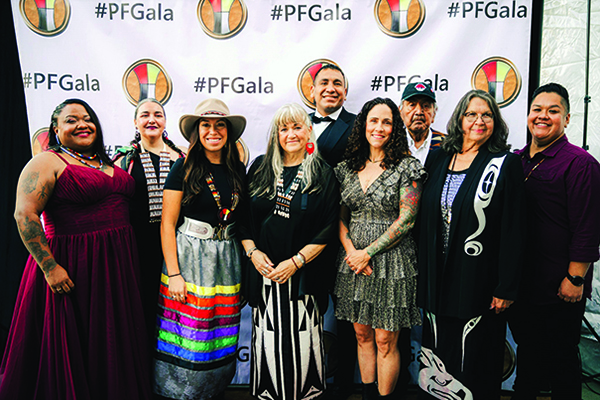
A perfect example of enduring potlatch principles is the aptly named Potlatch Fund. It’s a native-led nonprofit that provides grants and leadership development to tribal nations in the Pacific Northwest region. They recently held their much-anticipated annual gala at the Tulalip Gathering Hall.
“November is Native American Heritage Month, a time to celebrate the rich and diverse histories and cultures of the 7+ million Native American people. While many celebrate Natives during this month only, Potlatch Fund celebrates Native communities every day through the cultural tradition of giving in our four-state region of Washington, Oregon, Idaho, and Montana.
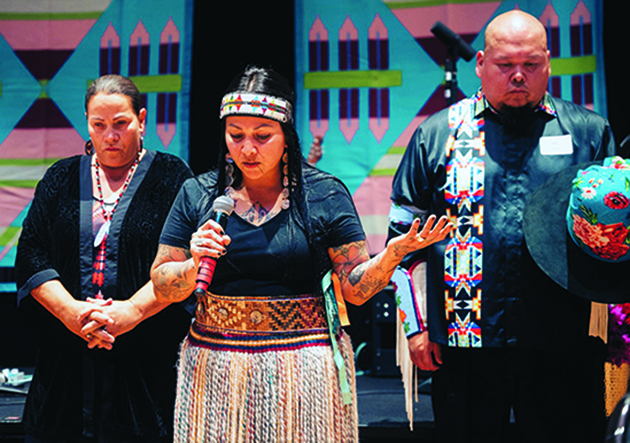
“Our organization measures wealth in shared abundance. We provide leadership development services to tribes and Native nonprofits; educate the non-Native and funding communities about the needs, issues, and structures that exist within Indian Country; run grant programs that support emerging and innovative initiatives; and advocate for our communities. We have graduated over 100 emerging leaders through our capacity-building program cohorts, distributed over $8 million through our grantmaking program, and recognized over 80 individuals and organizations through our many awards,” detailed the Fund’s board of directors in a press release.
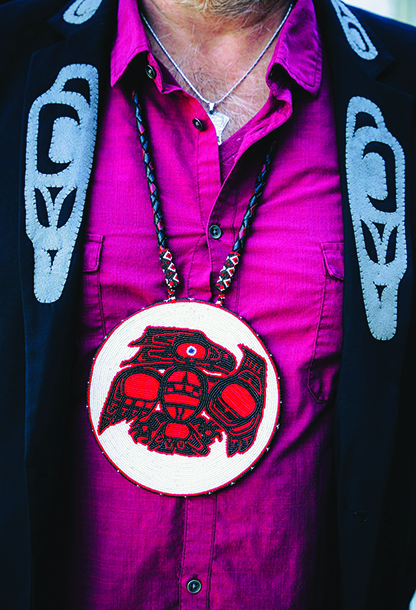

The memorable evening was full of Native culture bearers proudly flaunting their vibrant, handmade regalia and all manner of Salish swag. Announced as the Fund’s 20th anniversary gala, attendees did their best to be swept away in the spirit of giving. Compelled by the spirit, a whopping $260,000 was raised!
Beyond gifting of material possessions and cold hard currency, traditional teachings of giving extend to the sharing of knowledge, wisdom, and spiritual insights. Elders, who are highly revered within our community, play a crucial role in passing down these teachings to younger generations.
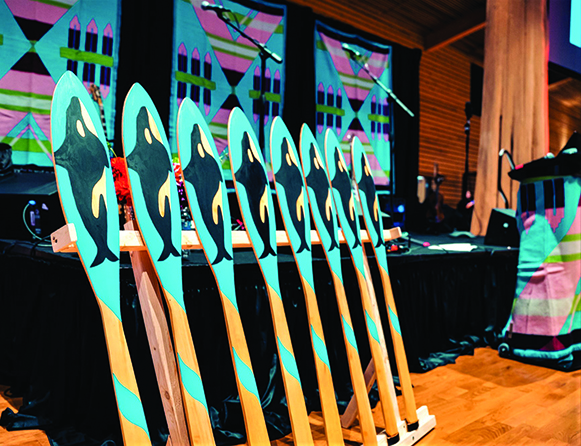
During the eventful gala, Sheryl Fryberg, a Tulalip elder and Early Learning Academy director, was announced as the Spirit of Reciprocity award recipient. She was described as a longtime supporter of the Potlatch Fund, fostering a genuine sense of outreach and inclusion, creating change with a vision towards the future, and demonstrating significant promise of leadership.
“I think Sheryl has a very innovative way of giving,” said Director of Philanthropic Partnerships, Brian Tanner. “It’s one that we wish to offer to donors for Potlatch Fund. Sheryl is able to calculate how much she would have paid in federal tax and give that portion to Potlatch Fund. The way Sheryl gives is intentional. She gets to decide where her hard-earned money is spent, and she chooses Potlatch Fund.”
After receiving the award, Sheryl said, “I look at this money as an investment. An investment in my community, and yours. A way to support the future generations. I believe that language, culture, song, and dance are part of what is going to heal our communities. It is by having the opportunity to participate in Tribal Journey and other community-driven activities that are funded by Potlatch Fund that our children and families reconnect with their traditional ways of being.”

During this season of giving, there are quite a few Tulalip-based events that are open to the greater community and offer plenty of opportunities to support local artisans. Most notable is the upcoming Holiday Bazaar happening November 17 and 18 at the Gathering Hall. Followed by Lights & Ice’s holiday market hosted near the Quil Ceda Village amphitheater November 24-26. And then the annual holiday Pow Wow hosted at the Marysville-Tulalip campus gym on December 16.
Remembering a legend: Jerry Jones, master carver

By Wade Sheldon; photos courtesy of Linda Smith
In the serene embrace of Tulalip Bay, the legacy of Tulalip tribal member Jerry Jones, a master carver, teacher, and king of home runs, is revealed with time and grace. Since his passing in 2003, the echoes of his artistic brilliance, passionate instruction, and unwavering commitment to the cultural tapestry of the Tulalip Tribes continue to resonate.
Jerry Jones, a luminary figure in the heart of Tulalip, carved more than just wood; he cut a legacy that embraced the essence of his people. His skilled hands breathed life into the timber, creating masterpieces that became living artifacts of cultural heritage. The classrooms under his guidance transformed into sanctuaries of wisdom, where the art of carving transcended mere technique, delving into the spiritual and historical dimensions embedded in each creation.
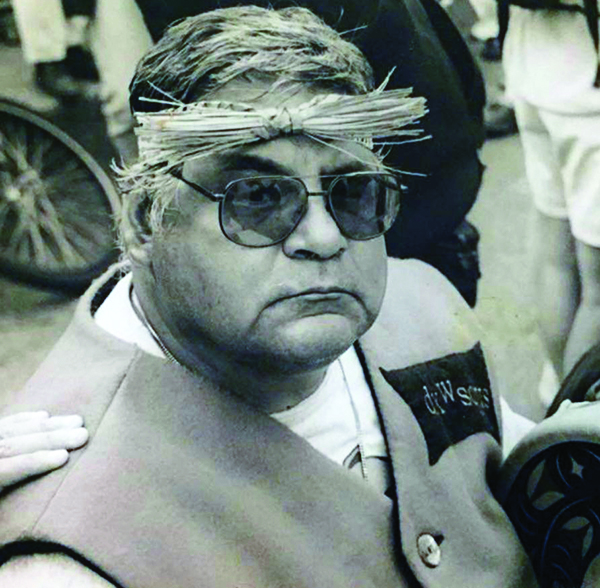
In an article by Cathy Logg titled “Tulalip Master Carver Dies at 62,” published in The Everett Herald on November 19, 2003, the author recounts the significance of Jerry Jones within the Tulalip community. Logg notes that in 1984, as Washington tribes geared up for the state centennial in 1989, a group of Indian tribes orchestrated the “Paddle to Seattle” to revive interest in ocean canoes and their traditional journeys. The article reflects on Jerry Jones’ pivotal role in leading this effort and highlights his contributions as a master carver and teacher within the Tulalip Tribes.
Guiding the efforts to create the tribe’s two canoes, Big Sister and Lil’ Sis, and constructing a third from cedar strips, Jerry Jones left an indelible mark on the Salish Sea. The lines of these canoes, crafted with precision and beauty, became a testament to Jerry’s artistry. His role expanded beyond a mere craftsman; he became a teacher, sharing not only the technicalities of carving, but also the cultural significance embedded in every stroke of the carving knife.
In the summer of ‘69, the Tulalip Chiefs, a championship baseball team led by Tulalip tribal member Cy Fryberg, featured the remarkable presence of Jerry Jones, known as the Babe Ruth of Indian Baseball. With Jerry Jones among their standout players, the Chiefs secured victories at Native tournaments, earning a spot in the final tournament in Tacoma. Overcoming challenges, the Chiefs emerged triumphant in the championship game.
Beyond Tulalip, Jerry Jones traveled the Northwest, lending his expertise to other tribal carvers working on their canoes. His craftsmanship became renowned from Oregon to Canada, and his legacy as a teacher and mentor expanded with each journey. Whether it was hats, baskets, drums, wooden paddles, masks, bowls, or totem poles, Jerry Jones left a lasting imprint on the artistic landscape, enriching the cultural heritage of the Tulalip Tribes.
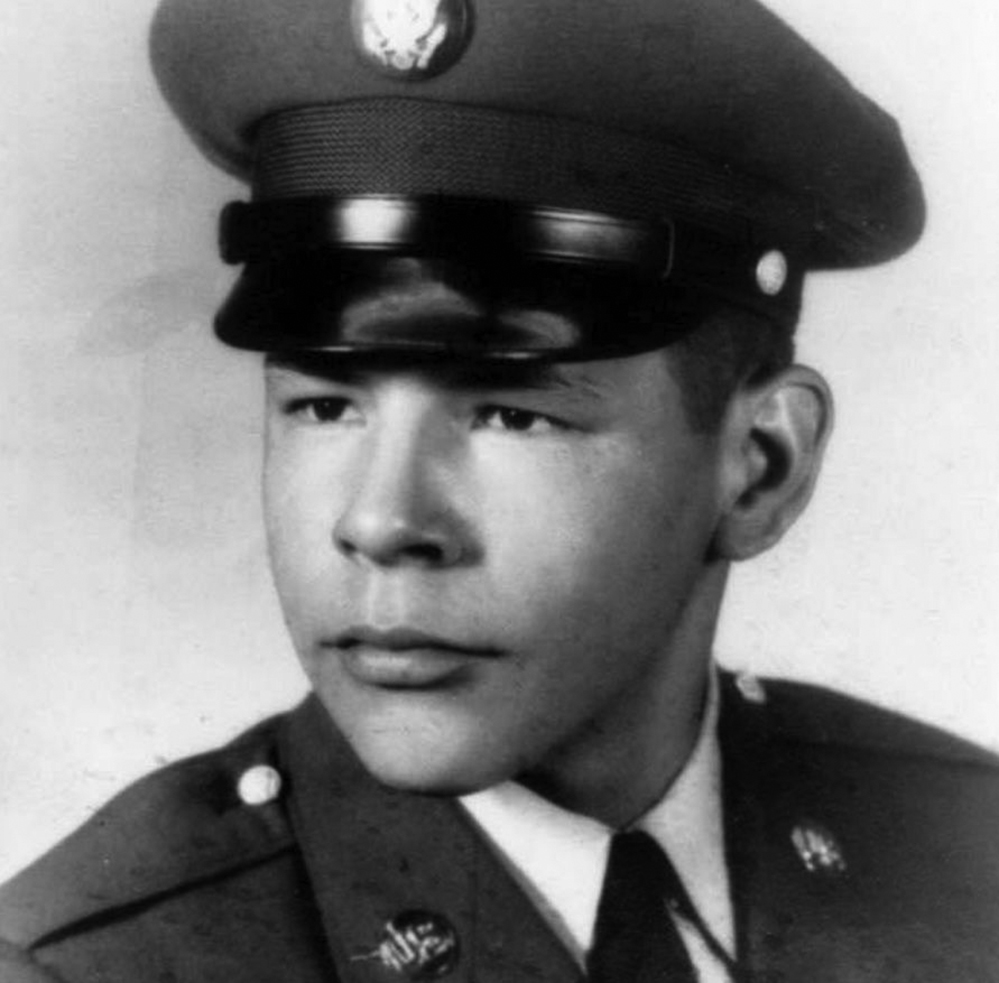
“He worked for the Tulalip tribes for several years. He was in the military and was tasked with being the lead carver on the canoes for Paddle to Seattle,” said Linda Smith, younger sister to Jerry Jones. “Because my brother was always willing to share, he would teach other tribes how to carve canoes. Recently, the Suquamish tribe honored him this year during the canoe journey for helping teach their carvers. I want people to know how sharing he was.”
Linda continued, “In the summers, he would have youth assigned to him at the carving shed. He would also participate in culture nights and share his knowledge and the stories he had learned in his life. He contributed a lot to Tulalip and other tribes, and when he had students learning from him, he expected a lot from them. Sometimes, we need that discipline; we must do our best. It’s something he believed.”
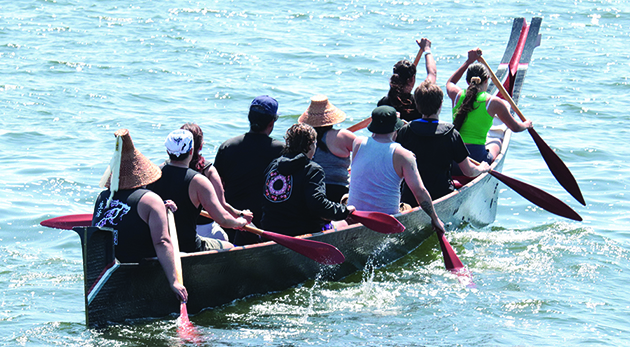
Jerry Jones, who shared his artistry, wisdom, and discipline, will forever be remembered for his contributions to preserving indigenous traditions and nurturing generations to come. In the embrace of Tulalip Bay, his spirit lives on, an enduring beacon guiding the canoe of tradition into the limitless waters of the future.
MAPping an alternative journey: New Mental Health Alternatives Program celebrates first graduate
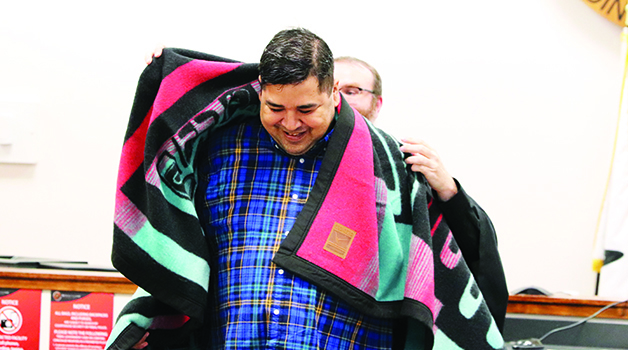
By Kalvin Valdillez, Tulalip News
November 9 was a historic day for Tulalip’s court system. We will have more on this big news in a few paragraphs, but first we want to introduce you to the court’s new alternative program that was implemented in October of 2022, which aims to assist tribal members involved with the courts and are in need of mental health care.
The Mental Health Alternatives Program (MAP) is designed to reduce recidivism in misdemeanor cases by providing those who qualify with a detailed 12-month plan that includes mental health treatment, community give back hours, as well as frequent court appearances, peer support group participation and phone check-ins.
According to the program’s literature, “MAP is a problem-solving approach to pending non-felony criminal cases, designed to hold offenders accountable and address underlying issues. The participants are connected to services that already exist in our community with the ultimate goal of keeping them from future criminal conduct. Participants have the opportunity to obtain services to address particular issues that may have contributed to criminal conduct, assisting them to achieve long term stability, become law-abiding citizens, and become successful family/community members.”
The program is a joint partnership between three parties, the tribal court system of course, and also Tulalip Family Services which is where the participants go for both their mental health assessments and treatment throughout the duration of the program. The third party is a local manufacturing company called Bridgeways, a social enterprise that is dedicated to assisting people living with mental illnesses whether it’s in regard to gaining or maintaining employment, housing support, or through their therapeutic courts program.
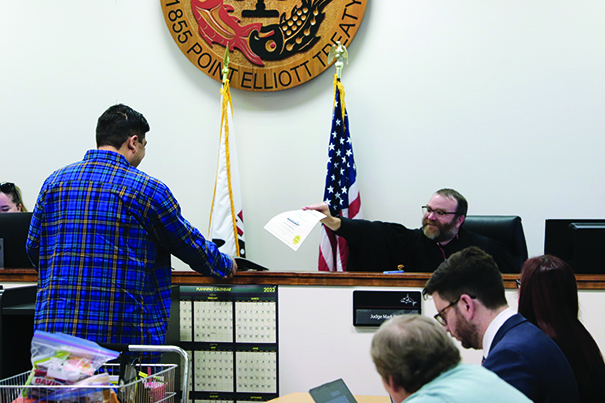
Bridgeways previously established two MAP programs at the Marysville and Everett municipal courts. And when the Tulalip court reached out to them about bringing a mental health focused program to the reservation, they were happy to lend their expertise. Now, with a trifecta of MAPs located in the heart of the Snohomish County region, Bridgeways is actively addressing an issue that may be the root of many reoffenders’ criminal behavior.
Moreover, they are doing this work in a highly effective manner that is concurrent to their mission statement of ‘providing services that promote quality of life for individuals living with a mental health concern in a manner that facilitates growth, independence, and a sense of community.’ In fact, according to the Bridgeways website, and with data collected by their judges, 93% of their graduates have experienced a reduction of recidivism.
Cathy Wheatcroft, Bridgeways Therapeutic Courts Program Manager, spoke about their partnership with the tribe, “Over a year and a half ago, Brian Kilgore, one of the prosecutors here, reached out to Bridgeways because we have Mental Health Alternatives Program courts in Marysville in Everett. And we’ve been doing MAP in those two courts – in Everett since 2014, and in Marysville since 2018.
“A few similarities – they all have three phases and are designed to be about a year long. It’s always the same core team, not from court to court, but it is always the same defense attorney, same prosecutor, same judge. And our liaison Jessica Barker also [works closely with participants] so they know the participants pretty well, it’s not like new people always coming in and out. And all three have the peer support group that they are required to participate in. Some differences are Tulalip holds court weekly and Everett and Marysville hold court every other week. Tulalip also does random UAs, which I feel holds the participants more accountable. But we all do this to help people and to see all their successes, they’re doing the work and I get to witness it and I think that’s amazing.”
Bridgeways’ successful program served as the framework to Tulalip’s MAP program. Drawing inspiration from the Tulalip Healing to Wellness and Family Wellness Court programs, MAP also has a certain requirement of giveback hours where the participants must volunteer some of their time to working local events and gatherings. Community giveback hours has helped numerous people get reacclimated into the tribal community and reacquainted with the people over the years.
With the MAP team supporting them along their 12-month journey, the participants set and define their life goals and immediately start working toward achieving them while in the program. Split into three, 4-month phases, the participants begin phase one with weekly court hearings, in phase two they attended bi-weekly court sessions, and in the final phase they meet with the judge on a monthly basis. If the participants follow their personalized plans that they put together with the MAP team, and remain in compliance each visit to the courthouse, they get to pick an item from a large basket of incentives to bring home. However, if they fall out of compliance, there are some sanctions that could range from an essay assigned by the judge to the termination from the program altogether.
“MAP is specifically designed to help people who have special mental health needs,” explained Judge Joshua Heath. “As a part of the program, they have to take their meds, if they’re supposed to be taking medication. They have to go to their mental health appointments. If they’ve got a cooccurring substance abuse disorder, we’ll help with that also. The Mental Health Alternatives Program is less punitive, probably the least punitive out of our programs because we’re just trying to understand where people are coming from. And we want them to be able to live a lifestyle that’s crime-free. Ultimately, that’s the goal of the Mental Health Alternatives Program is to live a crime free lifestyle. We want to give them whatever the help it is that they need, whether it’s getting a job or finding certain kinds of skills, even life skills, how to do basic things around the house – laundry and cooking, and so on. We want people to be able to graduate from a program and be able to be successful.”
Now that you have an understanding about the MAP court program, we can get back to the headlining news. But first, we’d be remiss to mention that this is the only tribal court Mental Health Alternatives Program to ever exist, so far at least, throughout all of Native America. Alright, so with that being said, it’s time for the big news: this November, Tulalip tribal member Jason Joseph became the very first graduate of a tribal MAP court program in all of history!
After confirming that he remained compliant through the last leg of the program, Judge Heath handed Jason a certificate of completion before he wrapped him in an Eighth Generation blanket and embraced him in a hug. Jason wore a smile as he was cheered on by a packed courthouse. Tears filled his eyes as his parent’s beamed with pride and his mom graciously thanked the MAP team for assisting in her son’s life transformation.
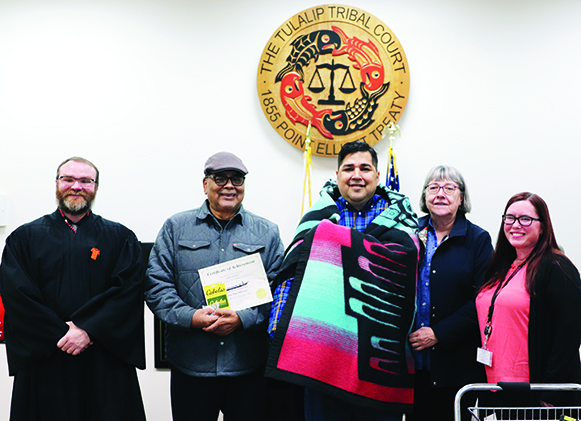
This was a momentous occasion for Jason, his family, the Tulalip MAP court program and its entire team, as it opens up a much-needed discussion about mental health within tribal nations. It also provides a new approach to addressing those mental health issues that many of our people are suffering from and have inherited from previous generations of trauma. Jason is the proof that cycles can be broken and that with the proper guidance and assistance, people living with a mental illness can turn their lives around and get set back on track in their own personal journey.
Several tribal members opted into the program prior to Jason’s ceremony, and a handful of individuals who were already in the program shared their progress. Jason’s accomplishment was equally important for them to witness because they were able to see that the program does indeed work, and hopefully they were able to envision themselves in Jason’s moccs, receiving a certificate of their own in about a year or so.
Jason shared, “It feels like it was a long time coming. It was like a yearlong process, but it was worthwhile. I learned a lot about myself and about people with mental health issues – what we need to do to get through the day, to get through life. This is important because tribal members with mental health issues have their own place to go to court now, and they can be represented openly and clearly in the right way.”
For additional details about the program, please contact the Tulalip tribal court system or MAP court liaison Jessica Barker. The following information was provided by the Tulalip Mental Health Alternatives Program:
Mental Health Alternatives Program
Requirements:
- Only misdemeanor charges can be referred to MAP. Charges not eligible: DUI, sexual offense, serious violent offense, offense which defendant used a firearm
- Participant must be amenable to mental health and/or chemical dependency treatment as appropriate
- Participant must not have been deemed incompetent to assist in their own defense and must not pose a risk to the MAP team
- Willing to sign agreement to follow program requirements
How to Refer:
Contact: MAP court liaison Jessica Barker
- Email: j.barker@tulaliptribes-nsn.gov or j.barker@bridgeways.org
- Phone: 360-716-4718
- Cell: 425-499-8051
Contact: Wellness Court Manager
- Email: Wellnesscourt@tulaliptribes-nsn.gov
- Phone: 360-716-4764
Respecting the warrior spirit
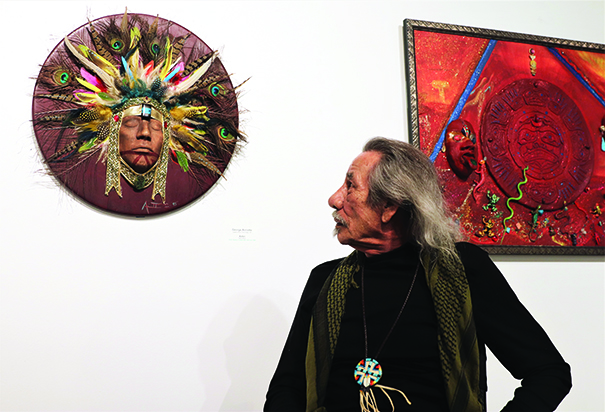
By Micheal Rios, Tulalip News
A stunning art exhibit curated by George Amiotte (Oglala Lakota), a decorated United States Marine Corps veteran, recently held its grand opening within the Evergreen State College’s main gallery. Showcasing a wide variety of Indigenous talents and open to the general public through December 30, this exhibit is proudly dedicated to all military veterans, past and present.

“Art is a living, breathing connection to our ancestors of the past, those living in the present with us, and our future generations. That’s why the title of this exhibit is Past, Present & Future,” explained George while proudly beholding the finished product. “What’s on display here is much more than 2- or 3-dimensional material; there’s a great depth of tradition and shared history told through a method of storytelling that’s been passed on since our people’s beginning.”
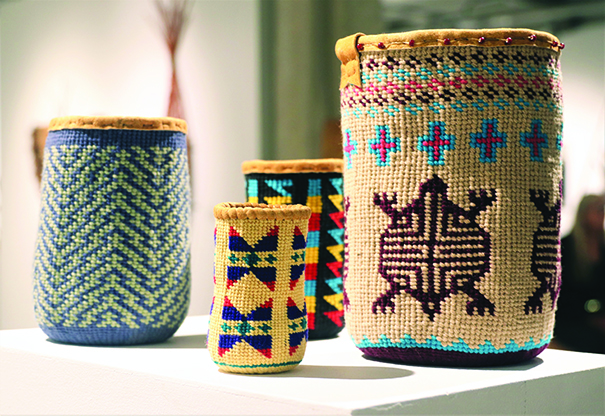
“I’ve always had an interest in learning about healing plants, as well as natural materials used in basket weaving. These specific bags on display were made by the mid-Columbia River and Plateau tribes of the Northwest and have always been used for gathering roots, plants, and berries. Because they are a soft bag, they can be folded and stored to be carried from gathering site to gathering site.” – Kathleen
George is a former marine who served two combat tours in the Vietnam War. He’s been immersed in the art realm since returning from Vietnam, from creating art therapy classes in South Dakota for Native children to developing art-based healing workshops that help veterans overcome post-traumatic stress disorder.
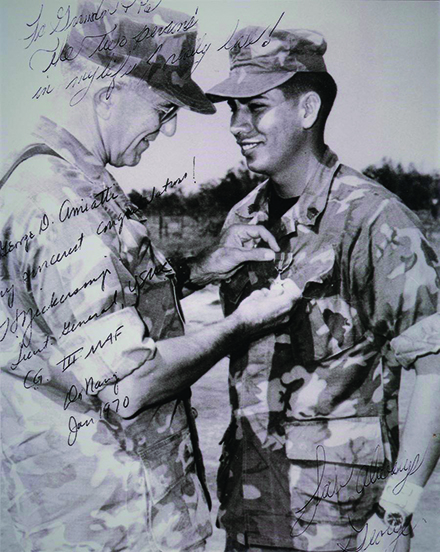
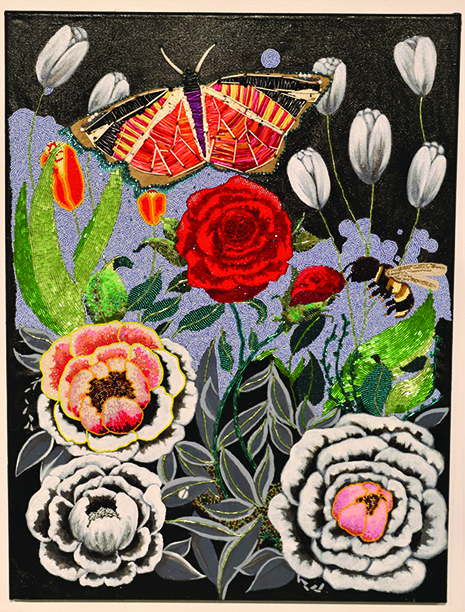
“One of my favorite workshops combined mask making and emotional processing that healed the spirit of our traumatized warriors,” recalled George. “You see it’s really hard to take a combat veteran, someone that really experienced the shit, and have them acknowledge what they experienced. By having them create a mask out of wood, clay, or papier mâché that described themselves, similar to a self-portrait, we could then begin to process the emotions and trauma they conveyed through their self-imagery.
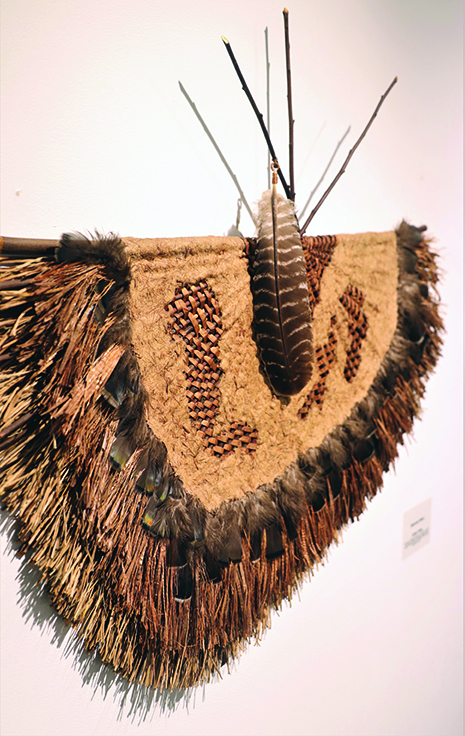
Melinda West.
“The creative process itself acts as therapeutic while giving our warriors a safe place to manifest their emotions because in order for them to heal, they can’t be stripped of their spirit,” he continued. “It’s important for our families and our people to understand that as veterans, we are modern-day warriors, and that warrior spirit has to be respected.”
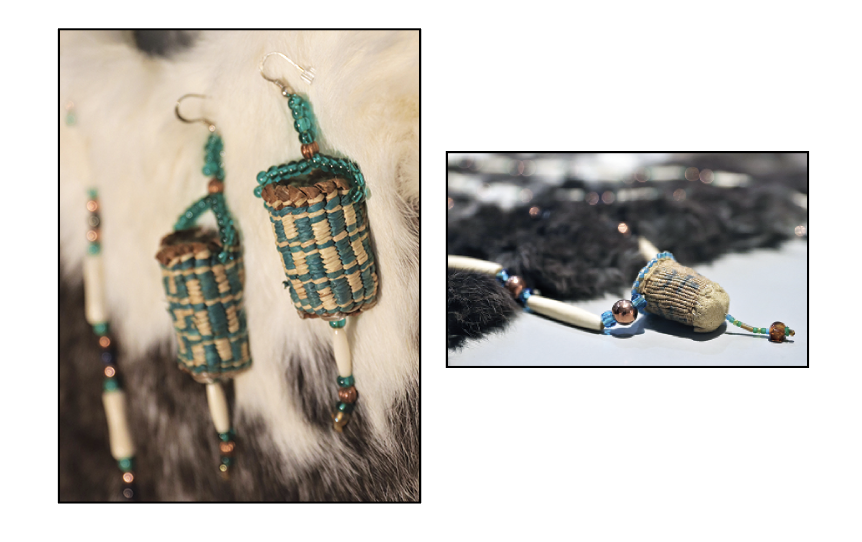
Through Past, Present & Future, the warrior spirit is respected and showcased as a means to empower Tribes and their vibrant culture during Native American Heritage Month.
The exhibit serves as a powerful educational tool. Through the presence of contemporary Native American art, Evergreen State College transformed its main gallery into an immersive learning space. Students and visitors alike are provided with opportunities to delve into the intricate narratives behind each piece of artwork – stories of creation, spirituality, and resilience. This education raises awareness, dispels stereotypes, and nurtures a deeper understanding of the Indigenous peoples who have called these lands home for millennia.
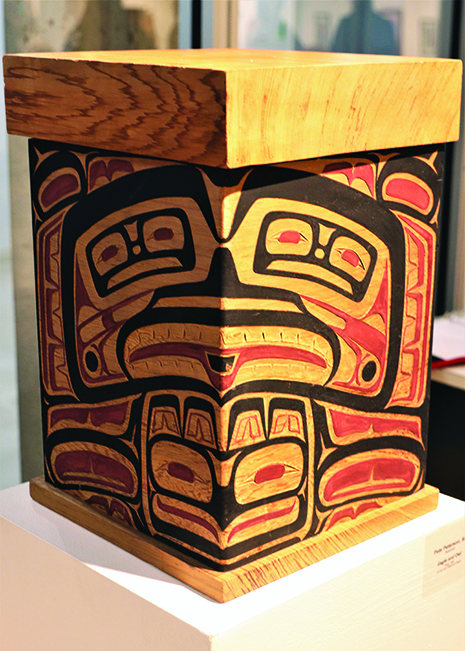
“I am honored to be invited to share my work with this community of artists,” shared exhibit artist Melinda West. “Born and raised in Seattle, I have lived my whole life on traditional Suquamish Territory. I hope the art I am inspired to make reflects my relationship with the place I live, the plants that grow here, and my respect for Indigenous Peoples living today who are caring for this land as their ancestors have done since time immemorial.
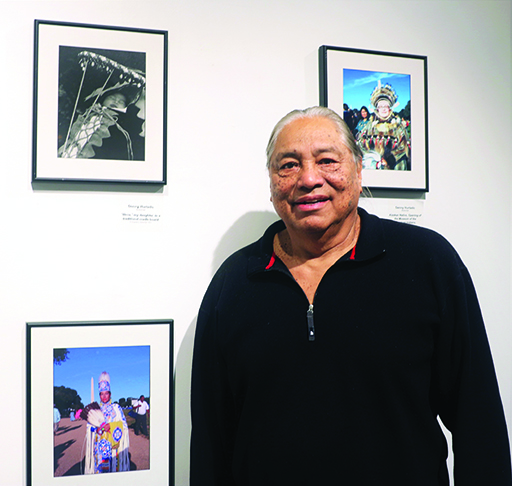
“Since I was a little boy, photographs have intrigued me. Seeing pictures of different cultures and countries is magical. I feel that the importance of documenting Native Americans in the 20th and 21st centuries is of the utmost importance as we continue to protect our sovereignty, our traditions, and our culture. The cultural revitalization of our Nations is tremendous and deserves to be captured and collected via photographs, so that our future generations can look back and be proud of what their ancestors worked so diligently to protect.” – Denny
Evergreen State College is located in Olympia, on the ancestral homelands of the Nisqually people. By implementing another Native-led exhibit, college administrators are furthering their mission to acknowledge the land’s original inhabitants. Incorporating Native American art is both a nod to history and a meaningful way to honor the enduring connection between the land and its Native peoples.

Like the impossible-to-miss welcome figure that stands permanently fixed outside the college’s main entrance, artists of Past, Present & Future strive for their welcomed gallery guests to further their understanding of Native culture, which continues to thrive in the 21st century.
November 11, 2023 syəcəb
Use the following link to download the November 11, 2023 issue of the syəcəb
Call of the Trumpeter: How a tribal veteran provides good, healing medicine to the community through Taps
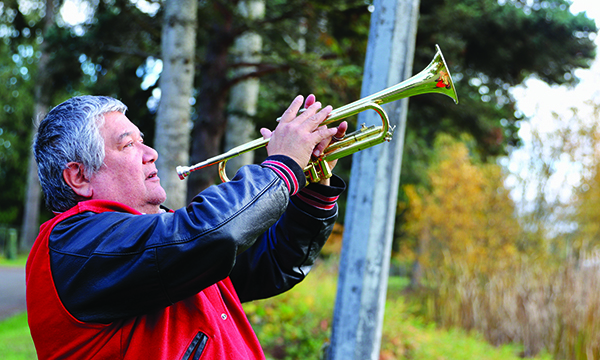
By Kalvin Valdillez, Tulalip News
There is a special moment that happens as Tulalip families say their goodbyes to their loved ones who served in the military. This moment is held as one of the highest honors that service men and women can receive when they are laid to rest. It’s both beautiful and bittersweet, and it’s the perfect way to send off tribal veterans to their next journey. Once a year, on the cusp of summer, all the families of those veterans who passed, including their brothers and sisters in arms, gather at the gravesites and once again recreate that moment of solace and honor to pay tribute to all of Tulalip’s fallen soldiers.
Tulalip tribal member and Marine veteran, David ‘Chip’ Fryberg Jr., plays a significant role in providing that moment of closure for families at the funerals for tribal veterans, and also at the tribe’s Memorial Day services. When the order is given, seven rifles, an eagle head staff, as well as the POW, Tulalip Tribes, Tulalip veterans, and the US flags are raised in the air for the 21-gun salute. At the same moment, Chip raises his brass horn up into the air, consisting of three valves and as shiny as ever. And as the second shot rings through the air, he begins to play Taps on the trumpet.
“I really love what our Honor Guard does, and I enjoy being a part of the tribute,” Chip stated. “The firing – bangs, the pops, and the smoke, it’s a great feeling and I feel it’s a good thing to do for the community, for Memorial Day. I went into the Marines in 1982 and got out in ’89. When I came home to the reservation, I got asked by my aunt Cookie to play Taps on Memorial Day. They borrowed a trumpet from somebody and asked me to play, and I’ve been doing it ever since.”
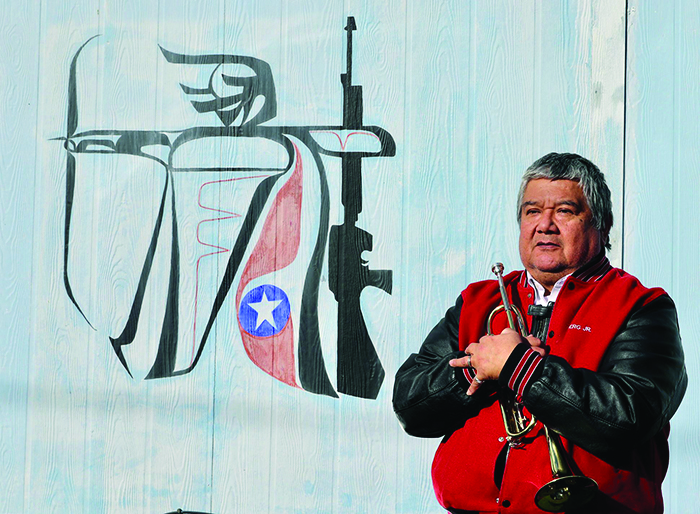
Chip explained that originally, he didn’t know if he would be asked to return to perform during the Memorial Day services, but he continued to graciously except the call year after year. They say musicians are their own toughest critics, and throughout the ‘90’s, David claimed he wasn’t that good and thought somebody would eventually replace him. But he vividly remembers the moment he decided to take on the title with authority and dedicate more time to perfecting his craft.
He shared, “Every now and then, we volunteer to play for (non-tribal) spouses and some of our good friends who we were in the military force with. We don’t do as many as we used to, but I’m always more than happy to get my trumpet out and perform for our veterans. A highlight for me was the first time I played in Schaefer-Shipman Funeral Home. Shipman himself came up and said, ‘I’ve heard a lot of people play Taps and I have something to say to you’. I was listening and I thought he was going to yell at me or something. But he goes, ‘I just got one thing to say, you are the greatest in the nation’. That lit a fire under me – about how well I have to play and take care of that song. I’m glad to take care of it and honored to bring it out with the guys in the Honor Guard.”
That line of thinking, taking care of the song, exposes Chip’s Indigenous roots in a substantial way. Just like a traditional song passed down through the generations, Chip is responsible for practicing the ceremonial song and performing it with a good mind, heart, and spirit, as well as with honor, pride and respect for those veterans who transitioned to the other side. David does this not only with a tribal mindset, but also that of a vet who knows what these men and women may have encountered or been exposed to while stationed at bases all throughout the world, what they witnessed and experienced on the battlefield, the vigorous trainings they went through and the multiple sacrifices they made while defending the nation’s freedom.
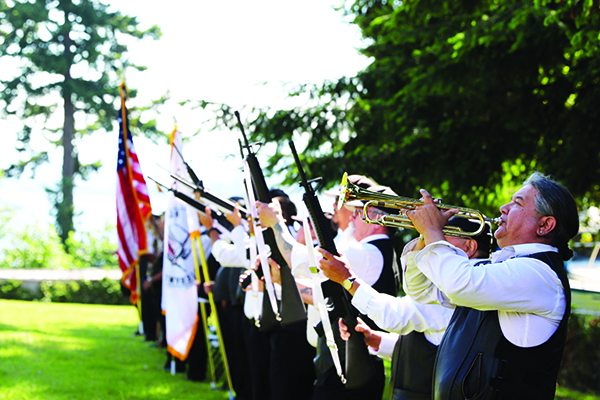
Said David, “Growing up, my grandmother Rose Fryberg had three pictures mounted on the wall, my two aunts and my dad. My dad was in his Marine Corps. uniform. When your dad is a Marine, you are kind of born a Marine. I just followed the tradition. After high school, I really didn’t want to go to college or deal with money issues – so I joined the Marines. I talked to the Army and the Navy, but I didn’t see myself as anything but a Marine. I chose to sign-up in November of ’81 and shipped out on January 27 of 1982.
“I went to San Diego, and I was a communications electronics tech. I fixed telephones and switchboards. I went to school for it for about nine months at Twentynine Palms. And then I went to Okinawa for two and a half years. I had a successful tour over there, went out into the field a lot. I reenlisted in Okinawa and did my last three and a half years at Camp Lejeune where I was a shipping and receiving NCO for communications electronics, which was a big deal.”
Early in his journey in the military, the Marines discovered that Chip had a background in music, and they encouraged him to try out for the Drum and Bugle Corps. at Twentynine Palms. And after playing the trombone all throughout middle school and high school, David was happy to learn he could continue to study and express his passion for music during his time spent at the southern California Marine base.
“That was a really hard thing for me,” he recalled. “Not going to college meant giving up my trombone. I started playing trombone in the sixth grade in Vancouver, Washington at Jason Lee Junior High School, we were a stage band. We were also a marching band, and we did parades all the time. On top of that, I was actually a member of the Spartans Drum and Bugle Corps. through seventh, eighth, and ninth grade. In high school I joined the Columbia River High School band, and we were the show band of southwest Washington. I marched in – I don’t even know how many parades. Even though I grew up in Vancouver, I got to march in the Strawberry Festival because our Drum and Bugle Corps. would get invited – and that was always neat, seeing family.”
He continued, “I was quite the horn player when I was a kid, I could pick up a trumpet and play some crazy stuff. But I’ve always been able to pick up any brass instrument. I was able to pick it right back up when I was down at Twentynine Palms. I made the Drum and Bugle Corps., and they were like, ‘we know you’re going to be in comm. tech, but in case you rock out, you can come with us and be a lead soprano for the Marine Corps. Drum and Bugle Corps. So, if I didn’t pass my electronics course, I would’ve been a Drum and Bugle Corps. member at Twentynine Palms and could’ve switched over immediately to the Marine Corps. Drum and Bugle Corps., which is a big honor. But needless to say, I became an electronics tech and went overseas.”
Since returning to Tulalip, and after agreeing to play Taps on Memorial Day in ’89, Chip has created lifelong bonds with his fellow veterans as the official trumpeter of the Tulalip Honor Guard. And as a member of the Honor Guard, there have been many opportunities that David has received, that he wouldn’t have otherwise experienced. For example, last Veterans Day, Chip packed up his trumpet and jumped on an airplane to Washington D.C. with the Honor Guard to participate in a march with thousands of other Native American military veterans during the unveiling of the new monument at the Smithsonian National Museum of the American Indian. During this trip, Chip was able to reunite with some of his friends, fellow comrades who he served alongside with during the ‘80’s, and they spent the day catching up and reminiscing on their time in the service.
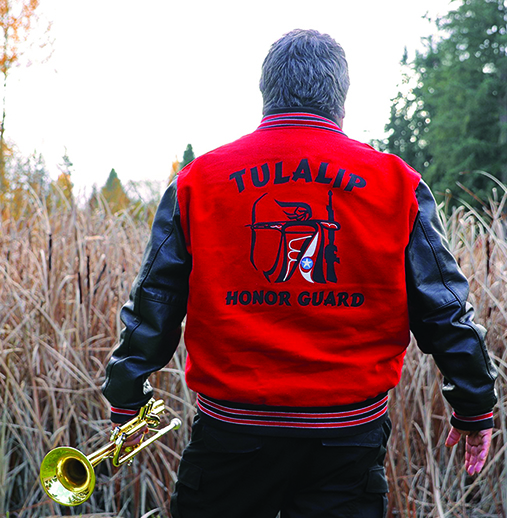
There have also been a handful of times when David’s fellow veterans and members of his family wondered if he would be able to perform Taps, or if he even felt up to the task, when the funeral services were held for one of his loved ones, his close friends and relatives. But in each of those instances, Chip felt that it was his responsibility to ensure they were sent off in a proper manner and in high honor, so he equipped his horn with the metal mouthpiece and took up his position with the Honor Guard during those final goodbyes. This was also the case with the man who inspired Chip to join the Marines in the first place, his father.
“He was my inspiration,” he emotionally shared. “All I know is that lived by his picture and to me, he was the greatest Marine ever. That’s why I did everything I did, because I wanted to be like my dad. Last year, we lost my dad, last February 14. And a lot of people didn’t know if I’d be able to play. But it’s a lot different when your dad is not only your dad, but he’s also your brother, he’s also your best friend, and he knew everything what you went through. So, playing Taps at my dad’s funeral was something I had to do.”
After contracting the coronavirus, Chip was hospitalized and put on a respirator for a number of weeks. When he woke, he was faced with a hard decision of either giving up the trumpet after years of playing for tribal veterans, or restart from scratch and dedicate even more time to the instrument to rebuild the endurance of his lungs back up following the near-death respiratory infection.
Chip withstood it all and came back determined as all hell to continue on as the Honor Guard’s trumpeter. Chip says he owed it all to his wife and daughter who not only encouraged him through the process but also kept him on schedule, waking him early everyday so he could practice his instrument following his late-night shifts in the table games department of the Tulalip Resort Casino.
Although Chip was happy to share his story and to be featured in the syəcəb, he was quick to share the glory with his fellow Honor Guard members. He stated that it’s the comradery that he shares with those men and women of the Tulalip Honor Guard that keeps him coming back year after year.
He exclaimed, “The song I play, I have a lot of respect for it and it’s an honor to play it. The Honor Guard is a team, and I’m really glad when we get together. It’s an honor to play Taps during the 21-gun salute. When we put it all together – that’s one pretty good package. I like to focus on being a part of the Honor Guard, it’s special and I like being a part of that special tribute. We all pitch-in and what we convey is what’s on our hearts – and we really mean that. We pay tribute to our fallen comrades and we’re glad to do it.”
Upon reading the first few paragraphs of this feature, you may have thought this story was about a local bugler, a trumpeter who plays at the funerals of Tulalip veterans and at the Tribe’s Memorial Day services. And sure, that is a large aspect of Chip’s journey and the services he provides today. However, this story is much bigger. It is the story about a man of dedication – whether it’s to his instrument, his community, his family, his fellow veterans, his culture, his country, Chip has laid it all on the line multiple times throughout his life for the values he believes in and for the people he loves.
Through the ups and downs, Chip always returned to his love for music. And through the performance of his trumpet, he has been able to spread love and good healing medicine to those in need from the community as their loved ones enter the spirit world.
Chip shared, “To my fellow veterans and the Tulalip Honor Guard, I’d like to thank everyone for answering the call and carrying yourselves the way you do. It’s heartwarming to see us come together to pay tribute to our veterans, we recently did a couple of funerals together for David Spencer and Pat Elliott. We love doing this for our fallen comrades and I love doing my part in what we do. I couldn’t do it without you guys. I’ve heard a lot of great stories over the years, and I can’t emphasize how grateful I am to each and every one of you for your service. Happy Veterans Day.”
Nourishing Culture: A peek inside Tulalip’s food sovereignty kitchen
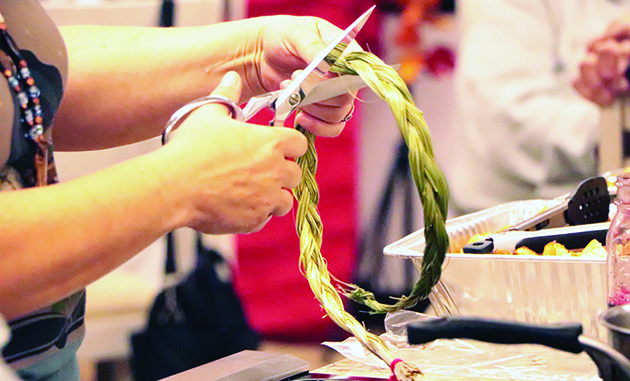
By Wade Sheldon, Tulalip News
In a transformative and visionary step towards reclaiming their ancestral culinary traditions, the Tulalip Northwest Indian College (NWIC) recently unveiled the groundbreaking Tulalip Food Sovereignty Presentation Kitchen. This innovative kitchen space, formerly a conventional classroom, symbolizes cultural revival and health empowerment. The soft opening event on Friday, November 3, was nothing short of a culinary journey, inviting the community to savor the flavors of Indigenous cuisine while unraveling the profound concept of food sovereignty. Step inside this unique kitchen and discover how it’s poised to revolutionize the relationship between tradition, health, and community.

The newly renovated space has undergone a remarkable metamorphosis, evolving from a mundane classroom into a welcoming haven of culinary exploration. With an expansive, open kitchen at its heart, it beckons onlookers and perhaps even a camera crew to witness the intricate process of preparing Indigenous foods. The kitchen’s primary mission is to serve as an educational hub where students can immerse themselves in traditional food preparation. It’s a place where the rich heritage of Indigenous cuisine is brought to life, instilling in the next generation the knowledge and skills necessary to honor and preserve their culinary traditions.
“I grew up in a fishing and hunting family, and I didn’t know that I was already practicing food sovereignty,” said NWIC teacher, Linzie Crofoot. “Our food kept us a healthy community. Food sovereignty is about community health; our traditional foods and medicines and their direct ties with resource management. Traditionally, we have been the gatherers, hunters, and fishermen responsible for tending the land and keeping it healthy and our people healthy.”
Linzie continued, “When I am teaching Native Environmental Science, and I am teaching about our native plants, I am incorporating tribal health into it. I am incorporating our traditional values into it. That’s how I plan on using this kitchen; as a gatherer and a Native Environmental Scientist, I want people out on the land to be restored to their natural role on the land, and then be able to come back here and make meaningful relationships with each other and the community through food. That is how we have always built community. There’s nothing more traditional than feeding each other and coming together to make food.”
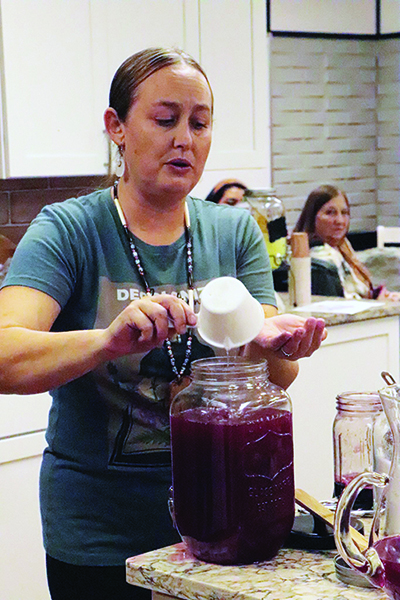
After the meal, Linzie demonstrated how to make a sweetgrass lemonade and started by creating a simple syrup. A mixture of sweetgrass water and sugar boiled create a tasty syrup that can be stirred into the lemonade. The goal of the demonstration was to show that you can start small with your introduction to a more native plant diet by creating one ingredient and building off that.
“When we tell people they need to eat traditional foods, they don’t know where to begin and get overwhelmed. They think they must be a gatherer or a hunter, or they need access to a bunch of land, and then they freeze and continue to eat all the same Western foods they have been eating their whole life. I want to incorporate easy things that you can do in your everyday lives. So, start with one cup of tea a month and sweeten it with a native plant, then work your way up. And don’t feel guilty about it,” said Linzie.
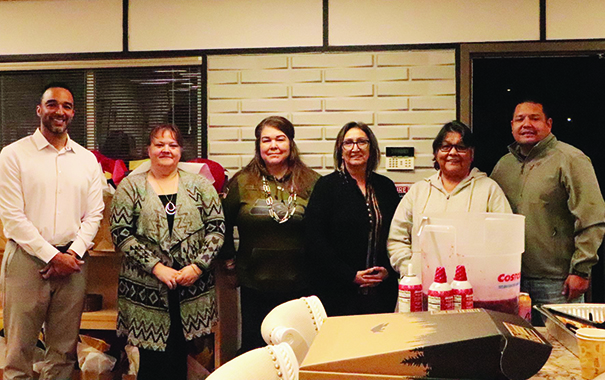
“This is the first tribal sovereignty kitchen in the nation,” said Colette Kieth, NWIC site manager. “The primary goal is that students understand what food sovereignty is and what tribal food sovereignty is and use our traditional foods. I also wanted a place where our students could have a camera-ready place for great presentations, like on Instagram and Facebook. I want our students to feel what it was like to work in a nice kitchen.”
The Tulalip Food Sovereignty Presentation Kitchen will have its grand opening in May, where students can create in the kitchen. Registration for winter classes opened on Monday, November 6th. To learn more about NWIC, visit nwic.edu.
This is Halloween! Community Halloween Party & TELA Pumpkin Extravaganza
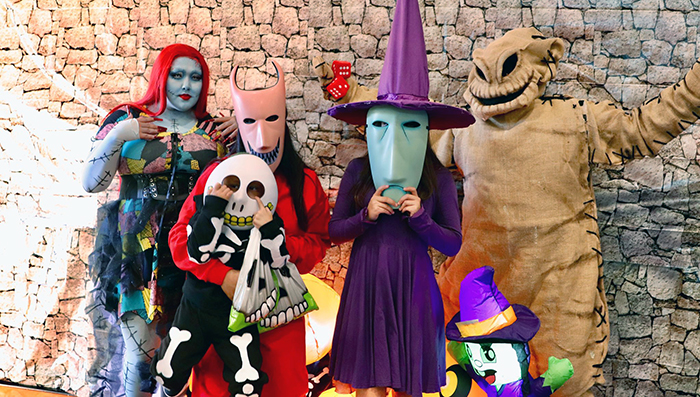
By Kalvin Valdillez
October came and went in the blink of an eye. But before November arrived, the Tulalip community was sure to get in some spooky time fun during the season of candy and costumes. One of the more popular holidays on the reservation, the people get into the Halloween spirit as soon as Autumn has sprung and begin to deck their lawns and office spaces with creepy decorations at the turn of the season.
Earlier in the month, local non-profit Together We’re Better held their annual Trunk or Treat gathering which was met with great success and served as the official kick-off to the Halloween season. Although there have been many Halloween department parties, school celebrations, and family get togethers, there were two events that many tribal families had circled on their calendars: the TELA Pumpkin Extravaganza and the Community Halloween Party.
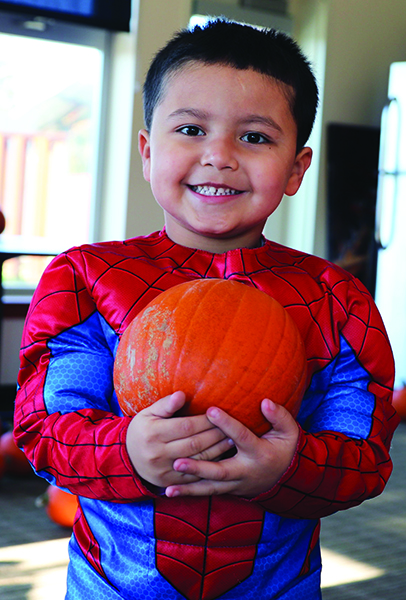
Betty J. Taylor Early Learning Academy Pumpkin Extravaganza
Laughter echoed throughout the TELA hallways on the morning of October 27, as the children arrived to their school in full costume. It was a little too chilly for the academy’s usual outdoor pumpkin patch, so dozens of mini pumpkins were scattered throughout one of the staff conference rooms. Upon picking out a pumpkin to call their own, they were able to visit a decorating station to adorn their gourds with stickers to make jack o’ lanterns with wacky faces and silly smiles.
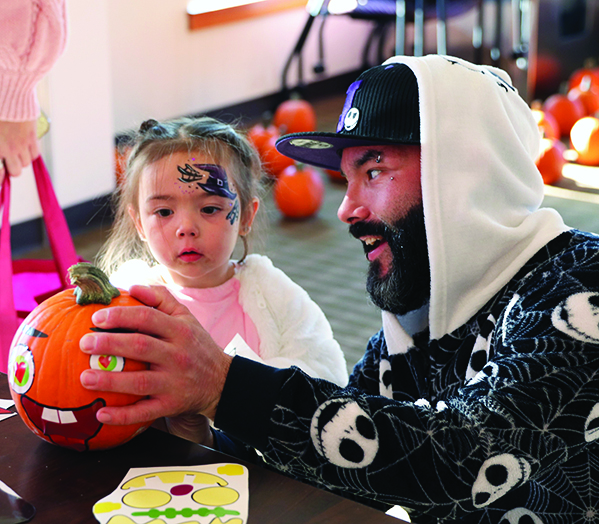

The students and their families participated in a number of activities including bouncy houses, caricature portraits, and face painting. A cute highlight of the day was when the kids bravely walked through the spooky halls of the academy and visited their teachers while trick-or-treating and participating in a variety of carnival style games!
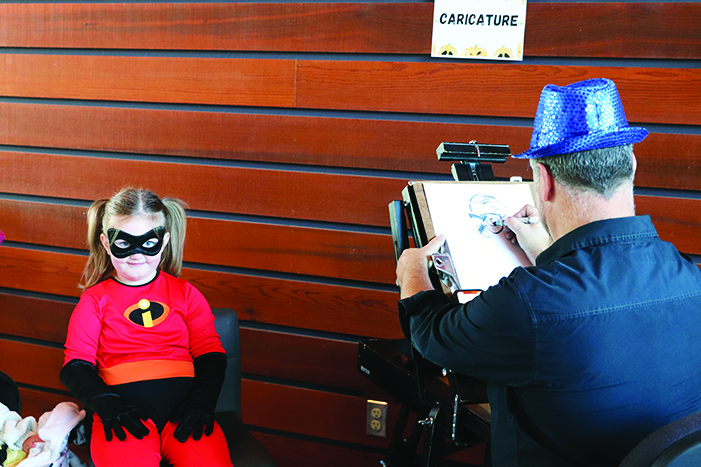

“I think it’s important to show that we’re just not a school, we’re a community, we’re a family, and we love interacting with one another,” said Absyde Decoscos, TELA Family Engagement Coordinator. “And it’s also important to show to the children that it’s not a separation between teachers and family, we’re all together and here for them. It’s good for the kids to see us all interacting together. It turned out good. It’s really fun. They loved seeing us all dressed up and we loved seeing them dressed up.”
Tulalip Community Halloween Party
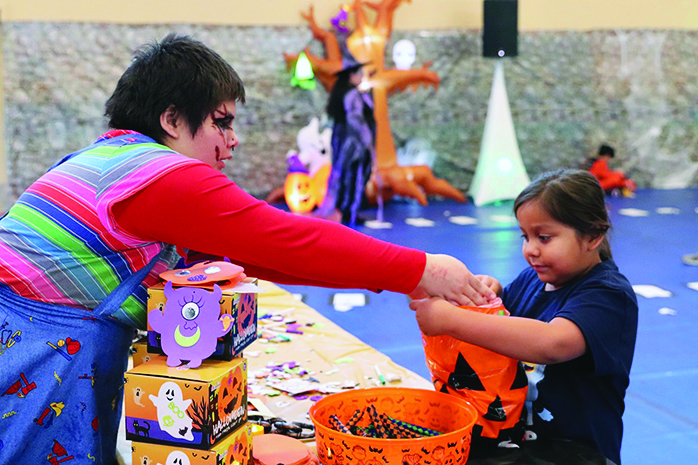
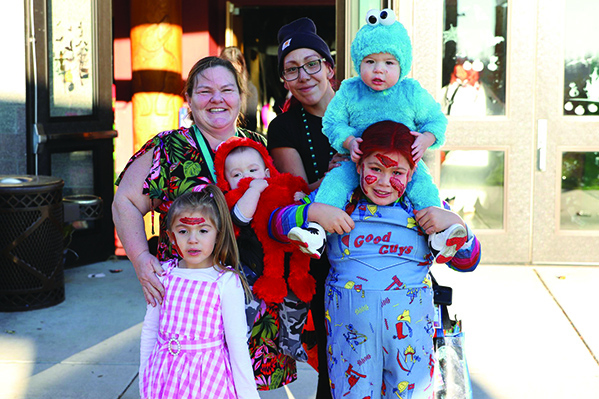
The Community Halloween Party returned for the first time since 2019 and did so in a big way. The party was jumping throughout the entire four-hour window on October 29, and hundreds of families came out to showcase their creative costumes. This was the type of event that the kids of the community will fondly look back on years from now, just off that feeling of togetherness as everyone from event planner to event go-er had a hand in making the night special, recreating those ghoul time vibes from the days of old, before the COVID pandemic.
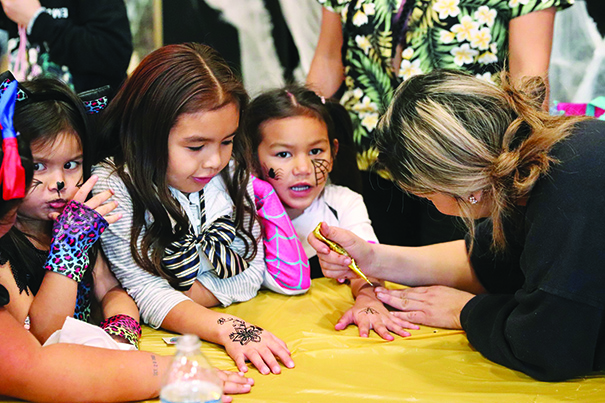
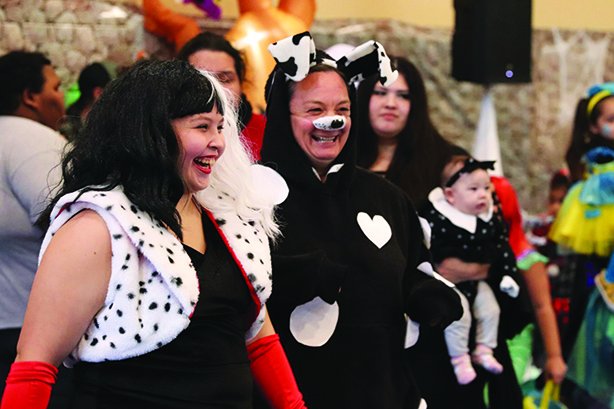
Families had a blast at the monster mash where there were numerous games, activities, pizza, and also a costume contest and a pumpkin carving contest. DJ Monie had the eerie tunes bumping and had the crowd at her command during the popular cake walk to close out the evening. A heartwarming thing to witness at this year’s party was members of the local recovery community working hard – setting up activity stations before the start of the event, manning said stations in full costume during the entire event, and sticking around until the very end to break down tables and help clean up the teen center, but most of all interacting with the people and getting reacclimated into the community in a good, healthy way.
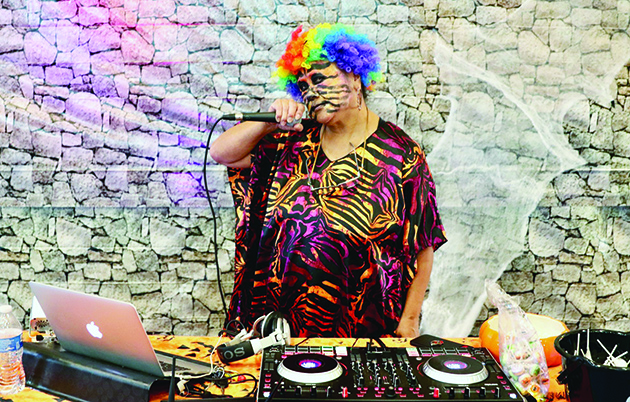
Said DJ Monie after the party, “We had a blast today! Thank you to everyone that came, and for the crew that helped make it happen. Also, thanks to the judges that volunteered for the costume contests. Happy Halloween everyone!”
November 4, 2023 syəcəb
Use the following link to download the November 4, 2023 issue of the syəcəb